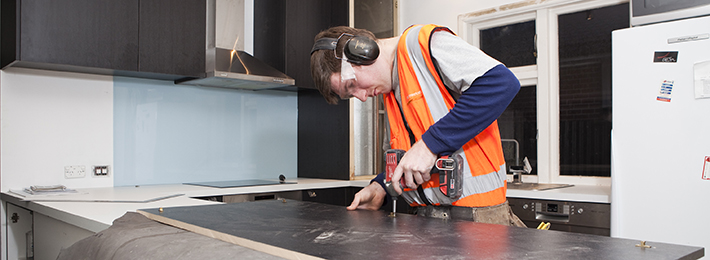Be a tidy Kiwi!
24 Jan 2017, Featured, Prove Your Know How

Poor housekeeping is simultaneously one of the most common causes of injuries at work and the most preventable. No one likes cleaning up, but it’s a necessary step to prevent onsite injuries
A tidy worksite is a productive and safe work environment for everyone. It also sets the tone for how your company is perceived and can impact your reputation – both with your clients and your staff.
If you have a problem with keeping your sites tidy, don’t panic; a messy worksite is one of the easiest problems to solve! All you need to know is what hazards to be aware of and how to minimise them.
Hazards to look out for
Obstacles and clutter:
- Loose objects on floors, stairs and platforms, along with excessive material or waste in the working area, are all potential trip hazards.
- Workers can easily bump into protruding, poorly stacked or misplaced material.
Waste:
- Rubbish accumulates quickly onsite – it is often irregular in shape, hard to handle and full of sharp objects.
- Watch out for overflowing waste containers and materials that have nails, wire or other items sticking out.
Wet and slippery surfaces:
- Weather can be unpredictable – rain, sleet or wind can make outdoor surfaces uneven or soft, increasing the chances of slipping.
- Oils and lubricants can spill, creating a dangerous, slippery surface. If the floor is oily while hot work is being done (ie, welding or grinding), it can also create a fire hazard.
Lighting:
- Inadequate lighting and dirty light fittings, windows and skylights can make hazards hard to see.
Hygiene:
- Bathroom and kitchen facilities that are not cleaned regularly can cause significant health hazards.
How can I minimise and control these hazards?
Organise storage:
- Provide sufficient and convenient space for materials and tools.
- Create a layout plan for materials and only order supplies as needed.
- Mark out work and storage areas – clearly separate work activities from materials.
- Use racks when storing lengths of pipe or timber – don’t stack pallets too high.
Create a healthy work site:
- If working outdoors, be aware of muddy areas – clear loose mud before setting up and climbing ladders, and clean as much excess mud as possible off footwear.
- Make sure the worksite is well lit – use natural daylight where practical.
Organise waste management:
- Establish suitable waste locations and separate waste products where appropriate (ie, controlled and special waste).
- Bag and tie lightweight waste to prevent it blowing around the work site.
- Hammer in or remove nails from wood waste.
- Never overload a skip – permission may be needed to place it on the road and it should be suitably cordoned off from the public.
- Beware of accumulating flammable waste.
- Inspect your waste – can anything be reduced, re-used or recycled? Waste costs money!
Maintain equipment and materials:
- Stack and store equipment and materials in fixed places, away from walkways and emergency exits.
- Put equipment away when not in use.
- Keep a fire extinguisher nearby when cutting or welding.
Implementing set standards of housekeeping at the beginning of each job is the best course of action. Cleaning up after yourself during the day, as well as having a 15-minute tidy-up at the end, will help you and the rest of your team concentrate on working hard – rather than nursing a sprained ankle.
A site audit from an expert health and safety advisor is a great way to make sure your housekeeping is up-to-scratch. Go to www.sitesafe.org.nz to find out more.
Register to earn LBP Points Sign in
3 Comments
Leave a Reply
You must be logged in to post a comment.




Nice quiz
Nice quiz
all good